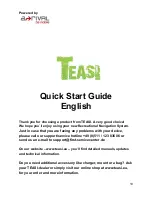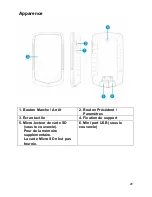
11
The use and operation of navigation systems
Attention!
Don’t operate with the device while driving. Even the smallest
and shortest distractions from road or traffic for you and other road users -
even at slow speeds – may have devastating consequences.
Type in the destination before starting your journey and start the navigation
system before you start driving.
If you have to change the route or the settings while driving, you should
better stop for it.
After switching on the device it could take a few moments to find the
required minimum number of navigation satellites. Depending on the
environment, it may go faster or longer. Under the open sky, it is the
fastest. In inner cities with narrow streets and tall buildings, this process
may take longer, because the "view to the sky" is very narrow and that
cause reflections of the satellite signals. In the forest it may also take
longer because of the crowns of leaves. In tunnels, buildings, etc. the
system does not work! As soon as you are positioned under the open sky
the connections to the satellites will be established as quickly as possible.
The map data is up to date in time of production of your navigation system.
Nevertheless, it may happen that you may have long-known streets, paths,
house numbers, roundabouts, etc. are not included. This is not a fault, but
due to the fact that streets are changing. Your device is using Open Street
Map (OSM). This is in our opinion the most useful map for cyclists. OSM is
a non-profit web-based collaborative project to create a free map of the
world. We like this idea and we support it.
Updates and Enhancements
You can download the detailed manual from our website:
www.teasi.eu
For software and map updates, please download our TEASI Tool for free,
also from www.teasi.eu.












































